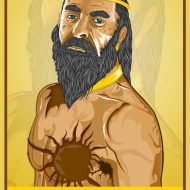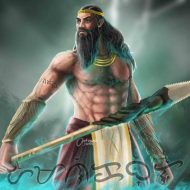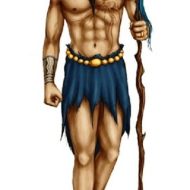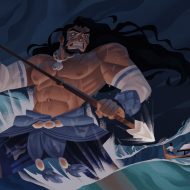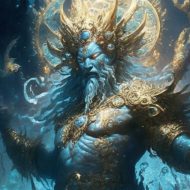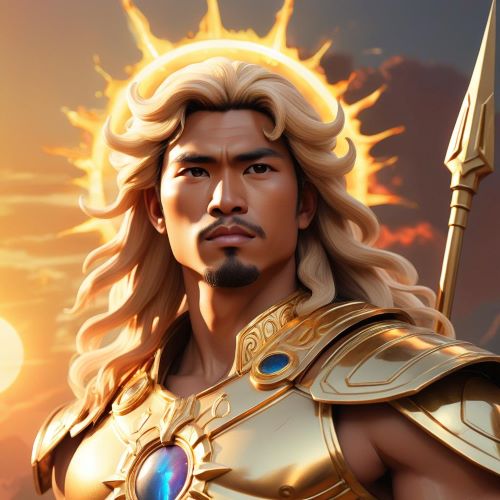Amanikable : God of the Sea
Listen
At a glance
| Description | |
|---|---|
| Origin | Philippine Mythology |
| Classification | Gods |
| Family Members | N/A |
| Region | Philippines |
| Associated With | Sea |
Amanikable
Introduction
He was first regarded as the god of hunters. In modern stories, he has been associated with being an ill-tempered sea god, replacing AmanSinaya as one of the first generation gods. He was never married after falling in love with a beautiful woman named Maganda. He was also enraged by the humans’ cruel behavior, causing violent waves and drowning people in order to avenge his enemies.
Physical Traits
Amanikable is often represented as a long haired and bearded tall man. His body is well built and is often shown holding a trident similar to Poseidon from Greek mythology.
Family
The anito of hunters Amanikable and Kablay were both syncretized in a legend from the Philippines. In the legend, a rich old man named Kablay would not give alms to the sea because he was a beggar. He was then turned into a shark as a punishment.
Powers and Abilities
He cursed the humans after he was frustrated by their cruel behavior. He would often cause violent waves and drown people in order to avenge his enemies. Despite his anger, he was still kind to others. This is in line with the belief that all deities from the Philippines are good.
The god of the sea, Haik, and Amanikable have a good relationship. This is a contrast to Amanikable’s prowess at hunting. In Tagalog polytheism, Amanikable’s emblems were found on his hunting weapons.
Modern Day Influence
Amanikable is one of those important gods who are being revived in the Philippines among the various ethnic groups in the islands along with other gods like Bathala and Mayari.
Related Images
Frequently Asked Questions
What is lorem Ipsum?
I am text block. Click edit button to change this text. Lorem ipsum dolor sit amet, consectetur adipiscing elit. Ut elit tellus, luctus nec ullamcorper mattis, pulvinar dapibus leo.
What is lorem Ipsum?
I am text block. Click edit button to change this text. Lorem ipsum dolor sit amet, consectetur adipiscing elit. Ut elit tellus, luctus nec ullamcorper mattis, pulvinar dapibus leo.
What is lorem Ipsum?
I am text block. Click edit button to change this text. Lorem ipsum dolor sit amet, consectetur adipiscing elit. Ut elit tellus, luctus nec ullamcorper mattis, pulvinar dapibus leo.
What is lorem Ipsum?
I am text block. Click edit button to change this text. Lorem ipsum dolor sit amet, consectetur adipiscing elit. Ut elit tellus, luctus nec ullamcorper mattis, pulvinar dapibus leo.
What is lorem Ipsum?
I am text block. Click edit button to change this text. Lorem ipsum dolor sit amet, consectetur adipiscing elit. Ut elit tellus, luctus nec ullamcorper mattis, pulvinar dapibus leo.

